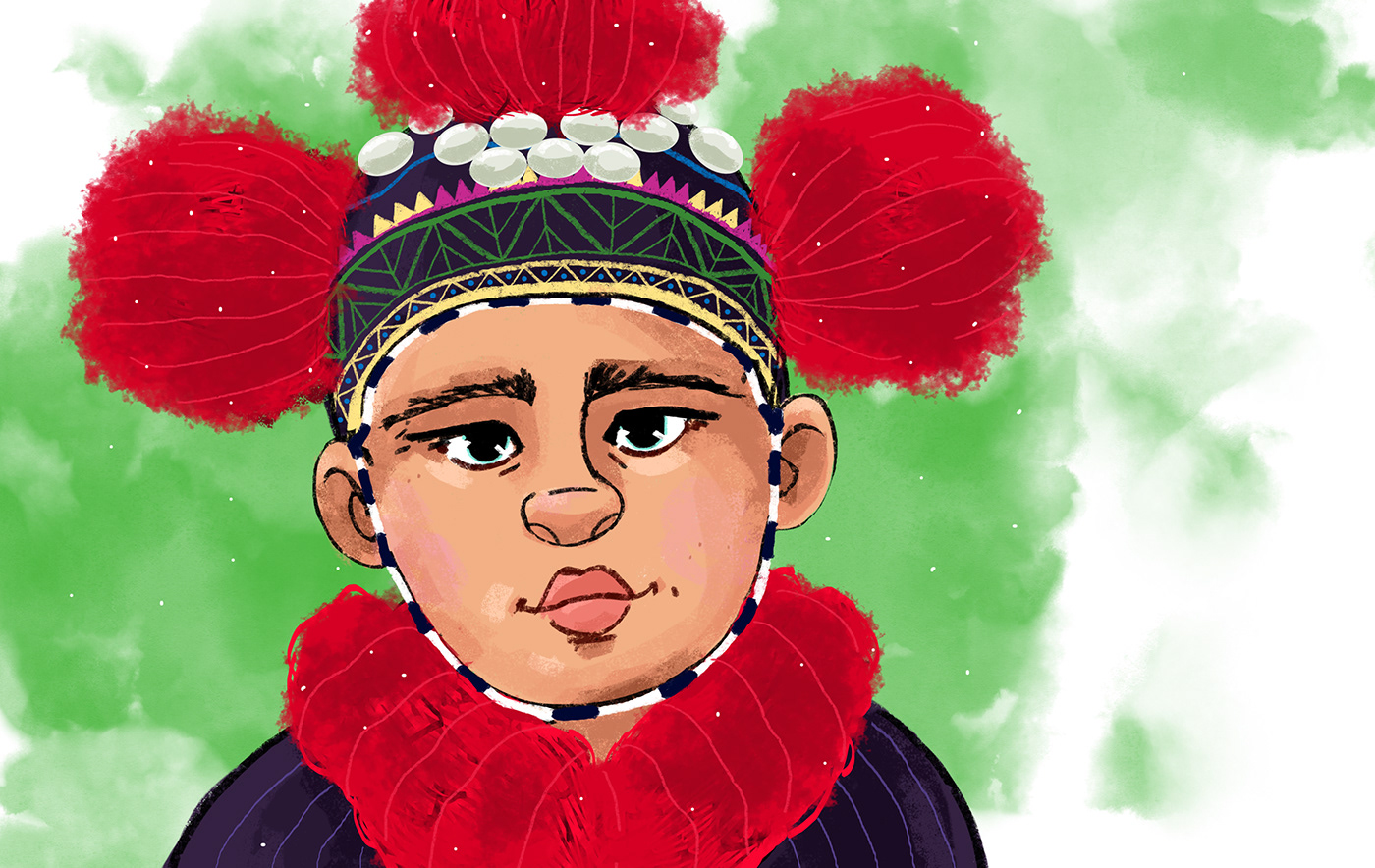~< Tribes of Thailand >~
It’s not always clear exactly what "hill tribe" (Chao Khao in Thai) means. The term came about in the 1960s and collectively refers to the groups of ethnic minorities living in Northern Thailand. Scores of hiking/trekking companies and travel agencies offer hill tribe tours where foreigners hike to or are driven into the surrounding mountains to visit these people in outlying villages.
All Illustrations are dedicated to the young children's of tribes who are keeping their culture alive.
For more artworks, please check my INSTAGRAM!
-X-X-X-
KAREN
The Karen are a tribal group who have historically lived in the hills on the Myanmar side of the Thai border. Best recognized for their elongated necks, the Karen women wear heavy brass rings around their necks, forearms, and shins. While the Karen men are mainly field workers and farmers, the women have a rich history of crafting from wood carving to weaving. Overall the Long Neck Tribes live a rugged, tedious, and simple lifestyle, but the fruits of their labor are colorful and very lively.

AKHA
The Akha hill tribe people live in Yunnan China, Kengtung in Northern Shan State in Myanmar, Northern Thailand, Laos and North Vietnam. In Thailand there are basically two subgroups of Akha hill tribe: Akha Loi Mi and Akha U Lo. The Loi Mi are easily recognizable by the distinctive metal plate on the back of the women’s head dress. The U Lo women wear a conical headdress.

HMONG
The Hmong hill tribe are found widely in northern Thailand, and are also the most widespread minority group in south China. The Blue Hmong subgroup live to the west of Chiang Mai, while the White Hmong are found to the east. Most Hmong live in extended families in traditional houses with a roof descending almost to ground level.

MIEN
The Mien are commonly referred to as the Yao in Thailand. They originated from China, but much of Thailand's small population settled in the eastern part of Northern Thailand after migrating from Laos during the Vietnam conflict. Mien villages in Chiang Mai province are found off Highway 118 near Pong Nam Ron and north-east of Thaton, but the majority are found in Chiang Rai and Nan provinces.

LAHU
The Lahu hill tribe originally lived on the Tibetan plateau and migrated gradually to Yunnan. They probably began moving into north Thailand in the 1870s or 1880s under pressure of Chinese domination.The Lahu hill tribe is a strong independent and very diverse ethnic group who number about 60,000 in Thailand. The Lahu are located primarily in Chiang Mai and Chiang Rai provinces, but can also be found in considerable numbers as far south as Tak province. Their settlements are usually remote from roads and towns, due to their strong commitment to the maintenance of the Lahu way of life.

LISU
The Lisu often referred to as 'Lisor' they refer to themselves as 'Lisu'. The word 'Li' comes from the word 'eelee' which means custom, tradition, or culture; 'su' means “person.” The combined meaning is: a group of people who share a deep pride in their customs, traditions, and culture. This can be seen as their traditional dress which is not only alive with vibrant colours; it speaks of their desire to keep to their age old traditions. The Lisu are considered to use the greatest variety of colors of all the hill tribes and maintain their traditional dress on a daily basis leaving their very best for special occasions

PALAUNG
The Palaung are the most recent ethnic group to arrive in Thailand. They have come here from neighboring Burma (Myanmar), where they are one of that country's most ancient indigenous peoples. They have fled in the past 20 years from Shan State and Kachin State to escape persecution and oppression at the hands of Burma's military rulers. Many of the Palaung in Thailand are refugees living in refugee camps.





